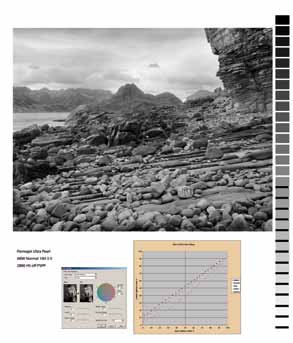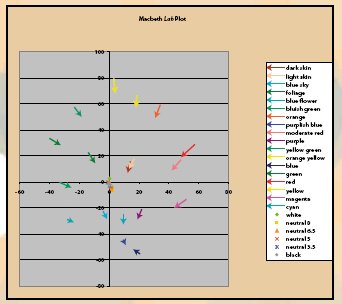articles/Paper/permajetultrapearl-page1
Great Paper Chase Permajet Ultra Pearl - part 1 of 1 2 3
by Mike McNamee Published 01/02/2010

This paper is brand new and arrived late in the magazine production schedule but we thought you might like to go and visit it at Focus! As we had just finished bedding in our new measuring protocols it was also given quite a close looking at!
It is a bright white media with a pearl finish. This makes it stand out somewhat in the market as the surface effect is strong and, if you like pearls and satins, attractive. It has the added advantage of increased toughness due to the application of an Image Protection Layer which confers considerable scuff and scratch resistance. It weighs in at 295gsm with a calliper of 290 microns. It was very flat and of moderate stiffness.
It is a cool paper with a Lab b value of -7.30. The OBA activity is high, rising to a reflectance of 106% at 430nm, about 12% above base reflectance. This makes for quite a bright, 'sparky' paper. The spectral curve is distinctive with a dip at 570nm although we are unsure how this affects the performance (see colour inconstancy index later).

The overall trend of the Lab plot shows the effect of the profile mapping to the coolness of the base paper, all the colours are heading south, other than the blue! This is a normal result for a cool, bright paper.
Colour Audit
With such a bright paper we did not expect any fireworks in terms of colour accuracy in the audit test. The tones were accurately mapped by our bespoke profile to the base white, which improves only the precision of the blue tones. The greys started out mapped at the white point and gradually became warmed as the tones progressed towards the shadows.
The highlights were separated right up to 252 RGB points. The detection of shadow differentiation was influenced by the viewing angle and the pearl coating, but 20 RGB points retained detail. The gamut volume was a middle of the road 880,282 (compared with say 914,730 for Permajet Gloss on a 3880). The Dmax for an 'all colour' print was high at 2.15. The Colour Inconstancy Index (CII) was higher than is normal for an Epson K3 UltraChrome inset at 3.07 (it's rarely above 1.7) and this may be due to the coating which also delivered an unusual spectral power distribution (but we are not sure!).
Overall then the colour printing was where it should be for this class of paper with the bonus of some extra sparkle and toughness, along with a high Dmax.
You are currently on page 1
- Great Paper Chase Permajet Ultra Pearl page 1
- Great Paper Chase Permajet Ultra Pearl page 2
- Great Paper Chase Permajet Ultra Pearl page 3
1st Published 01/02/2010
last update 09/12/2022 14:57:35
More Paper Articles
There are 0 days to get ready for The Society of Photographers Convention and Trade Show at The Novotel London West, Hammersmith ...
which starts on Wednesday 15th January 2025





